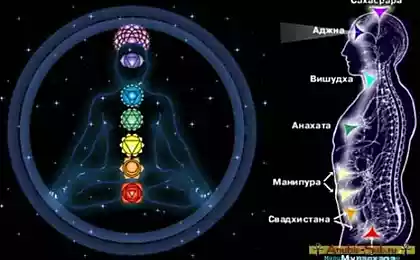527
Diagnostic exercises for problems in the spine
Exercises help to draw your attention to the presence of various problems in the lumbar spine and hip.
This will help you to compile an individual course of isometric training.
Ninety two million six hundred ninety five thousand five hundred seventy
1. Test of mobility in the lumbar spine
Original position – standing, feet on width of shoulders.
Your fingers feel bony projections of the spine in the midline of the lower back is the spinous processes of the vertebrae.
Ninety eight million five hundred forty seven thousand eight hundred forty seven
Place on the adjacent spinous processes of 2nd and 3rd finger of one hand.
Ninety two million one hundred eighty eight thousand nine hundred seven
Hold fingers on my spine, slowly bend forward and down.
Five million five hundred forty six thousand five hundred eighty three
2. Test diagnosis of hypermobility syndrome (increased flexibility) of the joints
Try to effortlessly pass the proposed test. If you scored 6 points or more – you may have increased mobility (hypermobility) of the joints. In this case, a traditional gym, load on the joints, you should be done with caution and only after consultation with your doctor. The maximum number of points – 9.
Attention! A healthy person with normal mobility in joints this test to pass will not.
Sixty five million two hundred sixty thousand six hundred twenty eight
• Straighten the little finger into 90° (1 point with each hand, Fig. 20, 1).
• Bring your thumb through the side and back to the contact with the forearm (1 point with each hand, Fig. 20, 2).
• Straighten the elbow joint 10° (1 point with each hand, Fig. 20, 3).
• Straighten the knee by 10° (1 point from each leg, Fig. 20, 4).
• Touch palms to floor without bending the knees (1 point, Fig. 20, 5).
Hypermobility (increased mobility) joints may be accompanied by increased risk of subluxations and other joint injuries, osteoarthritis, and musculoskeletal pain with the formation of tender points and knots in the field of bone protrusions. This condition is taken into account in diagnosis and treatment, including physical therapy.
If you suspect the hypermobility of the joints, one should not be upset. In most cases, this condition is asymptomatic, i.e. does not manifest itself.
And yet some people on the background of increased mobility of joints, pain in various joints. It is often not associated with rheumatic inflammation or osteoarthritis. However, such patients are inclined to acquire minor wounds and sprains of the ligaments and capsules of the joints, that causes pains.
The main treatment of this condition is gradual strengthening of the ligamentous and muscular apparatus without additional trauma.
Isometric exercises is for patients with joint hypermobility saving and extremely useful, because it allows to avoid injuries of the joints, which from birth in these patients are a weak point and, at the same time, strengthens the muscles and ligaments.
3. How's your hip joints? In the supine position bend the tested leg at the knee and place the heel on the opposite knee.
Nineteen million four hundred ninety three thousand six hundred seventy two
Now slowly lower the knee to the side. At this point the rotation occurs in the hip joint.
Sixty eight million one hundred twenty two thousand six hundred sixteen
4. General assessment of posture
Evaluate your posture in a tall mirror, looking at myself straight and on the side.
Eighty seven million forty six thousand one hundred forty three
Pay attention to the height and symmetry of shoulders, symmetry of shape, beauty and the smoothness of the curves of the spine.
Sixty nine million two hundred thirty seven thousand four hundred fifty two
Fifty four million seventy five thousand two hundred forty four
Obvious defects of posture will immediately attract your attention. Consult in this case.published
I. Borshchenko "Waist without pain. Unique isometric training»
The materials are for informational purposes. Remember, self-life-threatening, for advice regarding the use of any medicines and methods of treatment, contact your doctor.
P. S. And remember, only by changing their consumption — together we change the world! ©
Source: vk.com/wall-23903469?w=wall-23903469_10497
This will help you to compile an individual course of isometric training.
Ninety two million six hundred ninety five thousand five hundred seventy
1. Test of mobility in the lumbar spine
Original position – standing, feet on width of shoulders.
Your fingers feel bony projections of the spine in the midline of the lower back is the spinous processes of the vertebrae.
Ninety eight million five hundred forty seven thousand eight hundred forty seven
Place on the adjacent spinous processes of 2nd and 3rd finger of one hand.
Ninety two million one hundred eighty eight thousand nine hundred seven
Hold fingers on my spine, slowly bend forward and down.
Five million five hundred forty six thousand five hundred eighty three
- If the slope you feel the spinous processes will move apart and the distance between the fingers increases – the mobility of the vertebrae was normal.
- If several attempts distance does not change and you do not feel the divergence of the vertebrae – PERHAPS there is a limitation in the lumbar spine.
2. Test diagnosis of hypermobility syndrome (increased flexibility) of the joints
Try to effortlessly pass the proposed test. If you scored 6 points or more – you may have increased mobility (hypermobility) of the joints. In this case, a traditional gym, load on the joints, you should be done with caution and only after consultation with your doctor. The maximum number of points – 9.
Attention! A healthy person with normal mobility in joints this test to pass will not.
Sixty five million two hundred sixty thousand six hundred twenty eight
• Straighten the little finger into 90° (1 point with each hand, Fig. 20, 1).
• Bring your thumb through the side and back to the contact with the forearm (1 point with each hand, Fig. 20, 2).
• Straighten the elbow joint 10° (1 point with each hand, Fig. 20, 3).
• Straighten the knee by 10° (1 point from each leg, Fig. 20, 4).
• Touch palms to floor without bending the knees (1 point, Fig. 20, 5).
Hypermobility (increased mobility) joints may be accompanied by increased risk of subluxations and other joint injuries, osteoarthritis, and musculoskeletal pain with the formation of tender points and knots in the field of bone protrusions. This condition is taken into account in diagnosis and treatment, including physical therapy.
If you suspect the hypermobility of the joints, one should not be upset. In most cases, this condition is asymptomatic, i.e. does not manifest itself.
And yet some people on the background of increased mobility of joints, pain in various joints. It is often not associated with rheumatic inflammation or osteoarthritis. However, such patients are inclined to acquire minor wounds and sprains of the ligaments and capsules of the joints, that causes pains.
The main treatment of this condition is gradual strengthening of the ligamentous and muscular apparatus without additional trauma.
Isometric exercises is for patients with joint hypermobility saving and extremely useful, because it allows to avoid injuries of the joints, which from birth in these patients are a weak point and, at the same time, strengthens the muscles and ligaments.
3. How's your hip joints? In the supine position bend the tested leg at the knee and place the heel on the opposite knee.
Nineteen million four hundred ninety three thousand six hundred seventy two
Now slowly lower the knee to the side. At this point the rotation occurs in the hip joint.
Sixty eight million one hundred twenty two thousand six hundred sixteen
- In norm you can put your knee down almost to horizontal level without significant difficulty.
- The limitation of this movement indicates a possible pathology of the hip joint.
4. General assessment of posture
Evaluate your posture in a tall mirror, looking at myself straight and on the side.
Eighty seven million forty six thousand one hundred forty three
Pay attention to the height and symmetry of shoulders, symmetry of shape, beauty and the smoothness of the curves of the spine.
Sixty nine million two hundred thirty seven thousand four hundred fifty two
Fifty four million seventy five thousand two hundred forty four
Obvious defects of posture will immediately attract your attention. Consult in this case.published
I. Borshchenko "Waist without pain. Unique isometric training»
The materials are for informational purposes. Remember, self-life-threatening, for advice regarding the use of any medicines and methods of treatment, contact your doctor.
P. S. And remember, only by changing their consumption — together we change the world! ©
Source: vk.com/wall-23903469?w=wall-23903469_10497
A simple exercise that improves the blood circulation of the brain
Attention! Products that provoke premature aging























